Old family recipes can be treasured heirlooms.
For a while, I got on a kick where I would reinterpret dishes I remembered the women in my family making. To get inspiration, I called my grandma one week and asked her if she had any recipes from Granny Alice (my great grandma), who was always referred to as an intuitive and talented cook, as the matriarchs in families so often are.
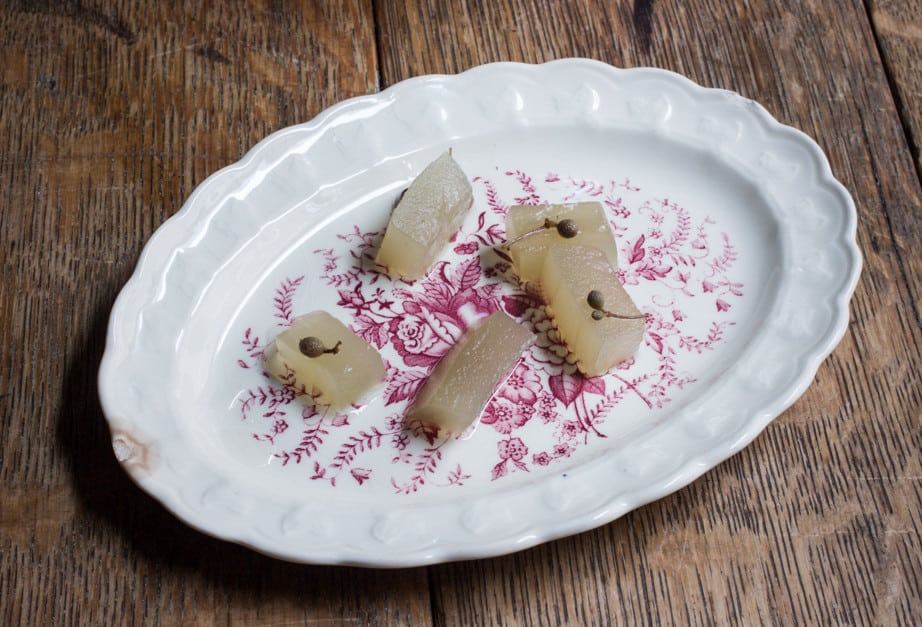
Grandma didn't have too many recipes, but somehow we got on the topic of pickles and she mentioned Granny Alice used to make some from watermelon rind. I had never made let alone tasted watermelon pickles, so I made sure to hold onto the idea.
A couple months later the watermelon started to come into the restaurant, and I was ready. I found a couple recipes online and made a few variations with different spices. The texture of the rind cooked in syrup is really good, definitely worth making.
Watermelon pickles are something that get better with time too, and benefit from the heating and processing of a water bath or pressure canner. The rind isn't naturally soft, erring on the side of cooking it more rather than less is a good idea.
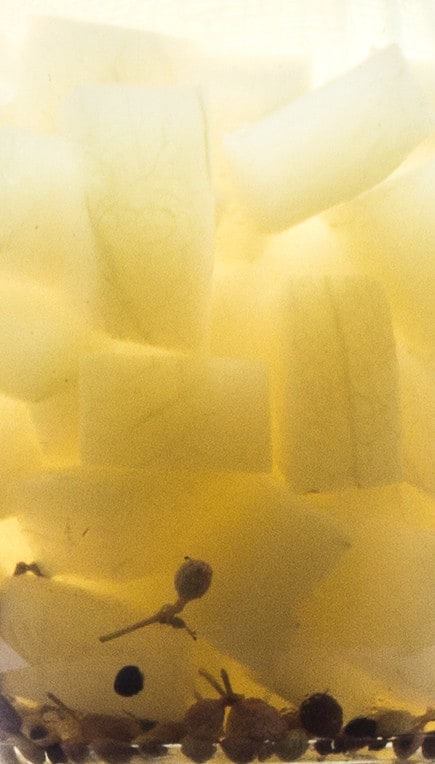
Four years later I discovered the Zanthoxylum. I was looking for ways to harness the citrus flavor of the berries and the leaves, and minimize the numbing sensation. One of the ways I used them was to flavor a basic pickle liquid. The liquid tasted great, but what to use it on? I wanted something bland that would bow down to the Zanthoxylum and let it take over, that's when I remembered Great-Grandma's watermelon pickles.
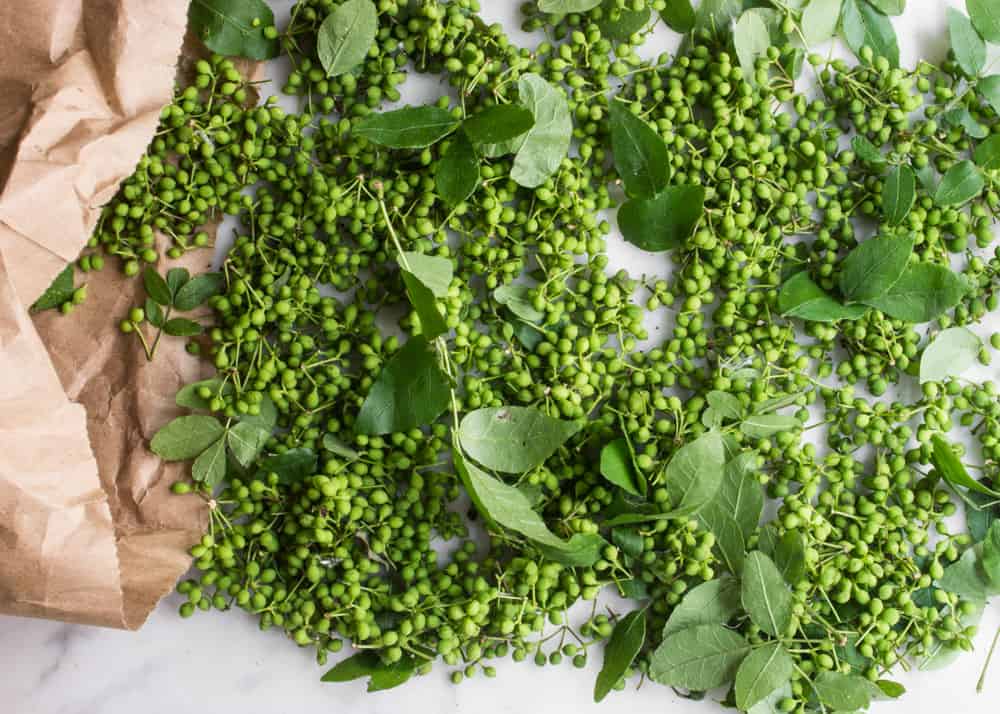
I made the pickles, canned them, then waited, and waited. I knew the longer the rind sat in the liquid the stronger the flavor would be, in the end I waited about 6 months. When I cracked the first jar though, I knew it was worth it.
The rind completely takes on the aroma of the Szechuan peppercorn leaves and berries, a bit like kaffir lime leaves crossed with lemon balm or something. I was curious if the numbing flavor of the berries would transfer too, since things can be dulled by cooking. But about 4-5 minutes after eating a pickle or two, I could feel the numbing begin to start, and it was great-just enough, but not too much.
In the end these are one of the best pickles I've made, and likely the most interesting. It doesn't hurt either that they let me imagine I was in the kitchen with my great grandmother for an afternoon.
Granny Alice, these are for you.
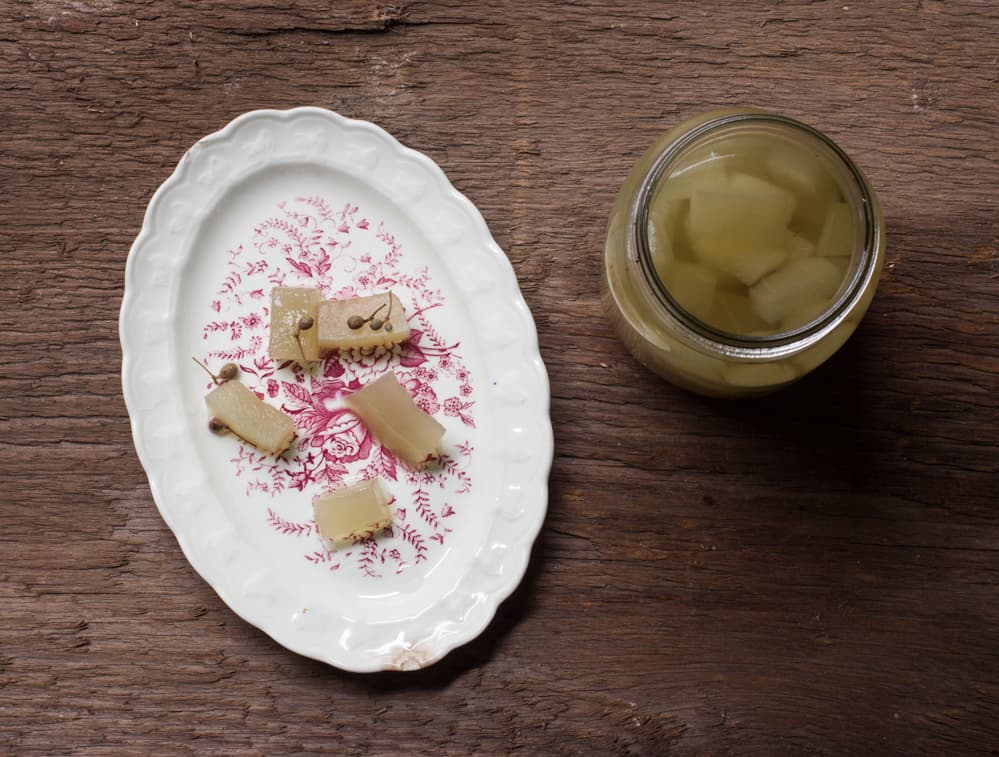

Watermelon Pickles With Zanthoxylum
Ingredients
- 1 large watermelon
- 5 tablespoons green Zanthoxylum berries/Szechuan peppercorns
- 1 quart champagne vinegar
- 6 cups white granulated sugar
- 1 quart water
- Pinch of salt
- A large handful of Zanthoxylum/kinome leaves
- 1 inch piece of lime zest white pith removed
Instructions
- Cut the water melon in half, then cut each piece into quarters. Carefully remove all pink flesh, then using a sharp vegetables peeler, completely remove all of the green skin to reveal the rind. Cut the rind into equal sized pieces to ensure even cooking, I liked 1 inch rectangles. Reserve the pink flesh for eating or making sorbet, you should end up with about 3-4 lbs of rind, depending on the size of your watermelon.
- Lightly crush the Zanthoxylum berries to release their scent then bruise the leaves lightly as well for the same effect.
- Next bring the water, vinegar, Zanthoxylum berries and leaves, lime zest, watermelon rind, salt and sugar to a simmer in a saucepot. cook the mixture for 30 minutes or so at a slow simmer until the rind is tender. Discard the leaves and lime zest at this point, or add it to the jars as a garnish. The watermelon rind should be completely tender, and the juice should be thick and syrupy, if the juice isn't thick, remove the rind and reduce the syrup a bit more.
- Pack the rind into sterilized jars then top with the hot syrup, making sure to leave ¼ inch of head-space at the top of each jar to discourage explosions.
- Divide the Zanthoxylum berries evenly between the jars, seal the jars then process for 15 minutes in a water bath canner. Remove the jars from the water bath and allow them to cool. When the jars are cool, inspect any for unsealed lids. If some of the lids didn't seal, you can repeat the canning process, or just keep them in the refrigerator.
- With the jars that sealed correctly, label and date them, then store in a dark place for a few months, or as long as you can wait to enjoy them.

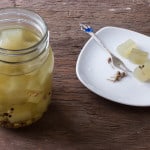
Nicole
I will pass this recipe to my Mom. She is famous for her pickles in our area and she makes fresh watermelon pickles but I know this might get her interest piqued. She is an amazing woman and ai appreciate her more and more every single day of my life. Thank you for sharing this recipe!
Jacqui
My Dad made tons of watermelon rind pickle. He soaked the rind pieces in brine (30g salt, 1 litre water) overnight and then cooked it in the brine till it became translucent (about 10 min) before straining and cooking it in the sweet pickling mixture (vinegar sugar and spices). We always imagined that this helped it keep its crunch.
Do you think this would work with dried Szechuan pepper?